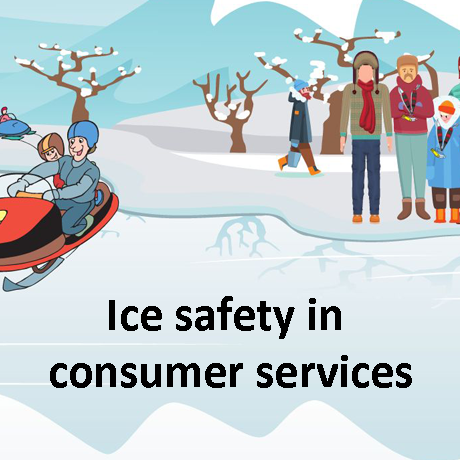Prepare for ice rescue and hypothermia
Service providers must teach ice safety to everyone working on ice. Those working on ice must have sufficient knowledge and skills to know how to rescue themselves and others and administer first aid. In addition, those working on ice should be able to identify the signs and consequences of cold shock, hypothermia, and the first aid required in these situations.
Plan what to do if someone falls through ice. Enter all the steps to be taken and a description of rescue capabilities in the safety document. Make rescue equipment and instructions for calling for help available in the service location. Identify the safest and quickest rescue route beforehand, as well as the address of the rescue location to be provided for rescue services. If required, contact the rescue authorities already when planning services to determine rescue locations. Plan ahead what to do if the arrival of help takes too long (for example, how to keep any person fallen through ice warm). In the rescue plan, address the safety of rescuers and also other customers monitoring the situation.
Practise escaping after falling through ice and rescuing a person fallen through ice beforehand. Any machinery operated on ice should have no cabin or doors, or it should be equipped with a roof hatch. Exiting from machines should also be practised.
The following rescue equipment should be available:
- a rescue suit, or dry suit;
- ice claws around the neck (+ a whistle); and
- a coil of rope, sticks or other long tools for ice rescue.
